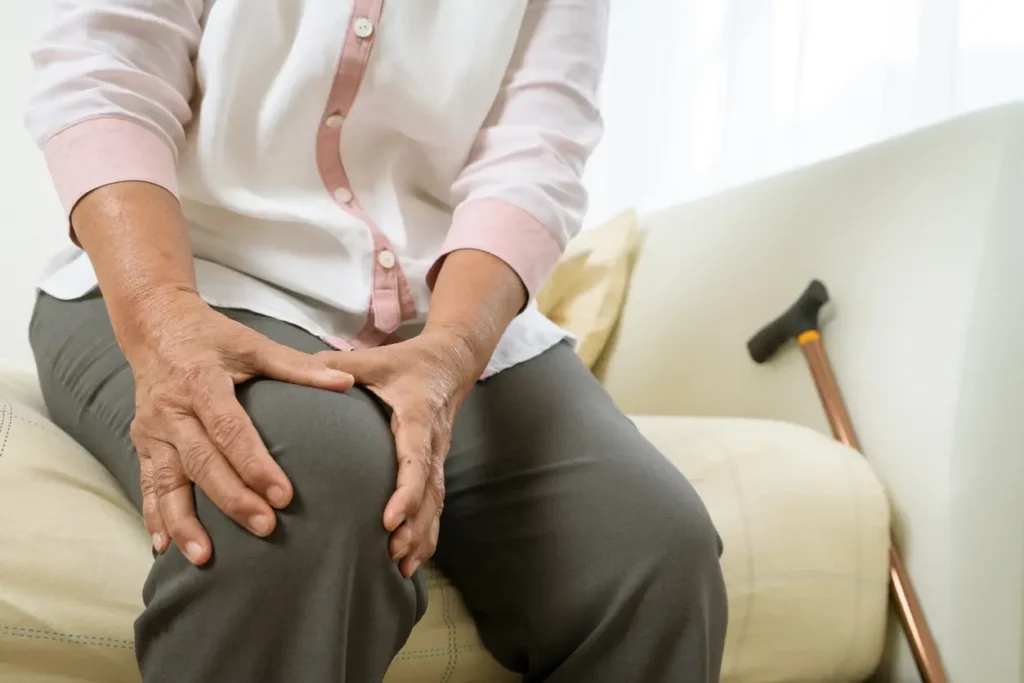Every step feels like a challenge, doesn’t it? That familiar twinge, the persistent ache in both knees that keeps you from enjoying your favorite activities, or simply going about your day without discomfort. Bilateral knee pain, a condition where both knees throb in unison, can be both mentally and physically draining. But here’s the good news: You’re not alone, and more importantly, there are solutions. From understanding the root cause of your pain to exploring expert-backed treatments, this guide will serve as your roadmap to reclaiming a life free from debilitating knee pain. Read on, relief is just around the corner.
Contents
Understanding Bilateral Knee Pain
Knee pain is something many experience, but when both knees start to hurt simultaneously, it falls under the term “bilateral knee pain.” Bilateral, a term derived from Latin, means “having or relating to two sides.” In the context of knee pain, it signifies discomfort in both the left and right knees.
The journey to finding relief begins with distinguishing between unilateral and bilateral pain. Unilateral knee pain refers to pain occurring in just one knee, either the left or the right. This can often be due to localized injuries or conditions that affect a single joint. On the other hand, bilateral knee pain typically arises from systemic conditions or factors that affect the body as a whole.
While unilateral pain might lead you to address a single injury or localized issue, bilateral pain often points to a more widespread underlying cause that requires a holistic approach to treatment.
Common Causes of Bilateral Knee Pain

Bilateral knee pain, the simultaneous discomfort in both knees, can be attributed to a myriad of causes, ranging from wear and tear to more specific medical conditions. Let’s delve into some of the most prevalent reasons behind this widespread pain.
Osteoarthritis (OA)
One of the most common forms of arthritis, OA is a degenerative joint condition that results from the wear and tear of the cartilage in the knee joints. As the protective cartilage wears away, the bones rub against each other, causing pain. Due to its degenerative nature, it’s not uncommon for OA to affect both knees over time, especially if you’ve been active or have been standing for long periods throughout your life.
Rheumatoid Arthritis (RA)
Unlike osteoarthritis, RA is an autoimmune disorder. This means the body’s immune system mistakenly attacks the synovium—the lining of the membranes that surround your joints. This can lead to inflammation and pain in multiple joints, including both knees. RA is systemic, which means it’s more likely to affect joints on both sides of the body simultaneously.
Bursitis
Bursae are small, fluid-filled sacs that cushion the joints. When these become inflamed, it results in a condition called bursitis. Although it can be due to a direct injury, it can also arise from prolonged periods of pressure on the knees or even infections. If both knees undergo similar strains, bursitis can manifest bilaterally.
Tendinitis
Tendons are tough bands of tissue connecting muscles to bones. Overuse or strain can lead to tendinitis, inflammation, or irritation of these tendons. Activities that place repetitive strain on the knees, like cycling or running, might cause bilateral tendinitis if the body isn’t conditioned or if there’s improper form.
Injuries
Though it’s rarer, simultaneous injuries to both knees can occur, especially in high-impact sports or accidents. For instance, a fall with force on both knees or an accident during skiing can result in bilateral injuries.
Other Causes
Certain conditions like lupus, specific medications, infections, or even obesity can lead to pain in both knees. It’s also worth noting that sometimes bilateral knee pain might be a combination of any of the aforementioned causes.
Recognizing the cause of bilateral knee pain is the cornerstone to effective treatment. If you’re experiencing persistent pain in both knees, consulting with a medical professional can provide clarity on the root cause and guide you towards the appropriate treatment.
Initial Steps for Immediate Relief
 Experiencing sudden bilateral knee pain can be alarming. While it’s essential to consult with a medical professional for a comprehensive diagnosis, here are some immediate steps you can take for temporary relief:
Experiencing sudden bilateral knee pain can be alarming. While it’s essential to consult with a medical professional for a comprehensive diagnosis, here are some immediate steps you can take for temporary relief:
- Rest:
- Avoid putting weight on your knees.
- Limit activities that exacerbate the pain.
- Ice:
- Apply a cold pack or ice wrapped in a cloth to both knees.
- Use for 15-20 minutes every 1-2 hours.
- Compression:
- Wear a knee brace or bandage to support and reduce swelling.
- Ensure it’s snug but not too tight to cut off circulation.
- Elevation:
- Prop your legs up on pillows, ensuring your knees are higher than your heart.
- This helps reduce swelling and promotes circulation.
- Over-the-Counter Pain Relievers:
- Non-prescription painkillers like ibuprofen or acetaminophen can help reduce pain and inflammation.
- Always follow the recommended dosage and consult a pharmacist or doctor if unsure.
- Stay Hydrated:
- Drinking water can aid in muscle function and joint lubrication.
- Aim for at least 8 glasses a day.
- Gentle Movements:
- Avoid staying in one position for too long.
- Slowly flex and extend your knees to maintain some mobility.
Remember, these steps are for temporary relief. Persistent or worsening pain should be evaluated by a healthcare professional to determine the root cause and appropriate long-term treatment.
Expert-Recommended Exercises for Strengthening
Strengthening exercises play a pivotal role in alleviating bilateral knee pain, offering support to the knee joint and mitigating stress. By fortifying the muscles around the knee, you’re essentially creating a robust support system. Here are some expert-recommended exercises.
Quad Sets

- Sit or lie down with your legs stretched out.
- Tighten the thigh muscles of one leg, pressing the back of your knee flat to the ground. Hold for a few seconds and release.
- Repeat 10-15 times on each leg.
Straight Leg Raises
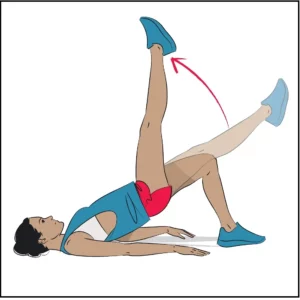
- Lie on your back with one knee bent and the other leg straight.
- Tighten your thigh muscles and lift the straight leg up to the height of the other knee.
- Hold for a few seconds, then slowly lower it.
- Perform 10-15 repetitions for each leg.
Hamstring Curls
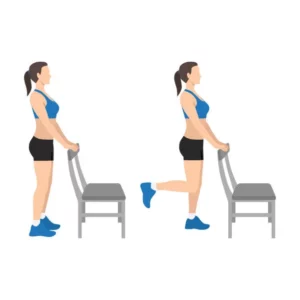
- Stand behind a chair or counter for support.
- Slowly bend one knee, bringing your heel up towards your buttocks.
- Hold briefly, then slowly return to the starting position.
- Complete 10-15 reps on each leg.
Step-Ups
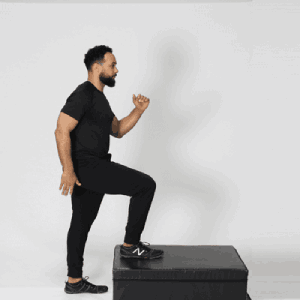
- Using a low step or bench, step up with one foot, followed by the other.
- Step down in the same order.
- Ensure your knee aligns with your foot and doesn’t go past your toes.
- Do 10-15 step-ups for each leg.
Wall Sits

- Lean against a wall with your feet shoulder-width apart.
- Slide down into a squatting position, keeping your knees aligned with your feet.
- Hold for 10-30 seconds and slide back up.
- Repeat 5-10 times.
Bridge Exercises
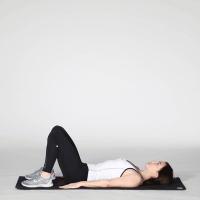
- Lie on your back with knees bent and feet flat on the floor.
- Tighten your abdominal muscles and lift your hips off the floor.
- Hold for a few seconds, then slowly lower your hips back down.
- Perform 10-15 bridges.
Remember, consistency is key. These exercises should be done regularly, but always listen to your body. If any movement causes sharp or increased pain, stop immediately.
How Physical Therapy Can Help Treat This Pain?
 Navigating the journey of bilateral knee pain relief can be complex. But with a physical therapist (PT) by your side, you gain the advantage of a professional approach tailored specifically to you. Let’s delve into why seeing a physical therapist is a game-changer:
Navigating the journey of bilateral knee pain relief can be complex. But with a physical therapist (PT) by your side, you gain the advantage of a professional approach tailored specifically to you. Let’s delve into why seeing a physical therapist is a game-changer:
- Personalized Assessment:
- Every individual’s body, pain levels, and health history are unique. A PT will evaluate your specific condition, range of motion, and pain triggers to create a comprehensive overview of your knee health.
- Tailored Exercise Regimen:
- Based on their assessment, a PT will design exercises suited to your individual needs. While general exercises might offer relief, targeted movements can address specific areas of weakness or pain more effectively.
- Safe Progression:
- As your strength and mobility improve, a PT ensures that you progress at a safe and appropriate pace. This minimizes the risk of injuries from advancing too quickly or attempting exercises beyond your current capacity.
- Hands-On Techniques:
- PTs are trained in various hands-on techniques, such as manual therapy, massage, or joint mobilizations. These can help in reducing pain, improving mobility, and facilitating better muscle function.
- Equipment and Modalities:
- Physical therapy clinics often have specialized equipment not typically available at home. This can include ultrasound machines, electric stimulation, or traction devices that can aid in pain relief and recovery.
- Consistent Monitoring:
- Regular sessions with a PT mean consistent monitoring of your progress. They can adjust your treatment plan based on how you’re responding, ensuring optimal results.
- Holistic Approach:
- Physical therapists often adopt a holistic approach. Beyond exercises, they might provide guidance on lifestyle changes, dietary recommendations, or ergonomic advice, all contributing to overall well-being and pain relief.
In essence, physical therapists offer more than just exercises; they provide a comprehensive and personalized approach to not only treat the symptoms of bilateral knee pain but also address its root causes. Investing in regular sessions can pave the way for faster recovery and long-term knee health.
Conclusion
Bilateral knee pain can be a daunting challenge, altering the quality of life and daily activities. But remember, enduring pain isn’t a requisite. With the right guidance, expert insights, and targeted exercises, recovery is not only possible—it’s probable. Physical therapy stands out as a beacon of hope, offering personalized, effective, and science-backed solutions. If you’re weary from the constant ache in your knees, it’s time to take the next proactive step towards relief and rejuvenation.
If you’re experiencing Knee pain, physical therapy for knee pain at PhysioMantra can help: Book an online physical therapy session.

